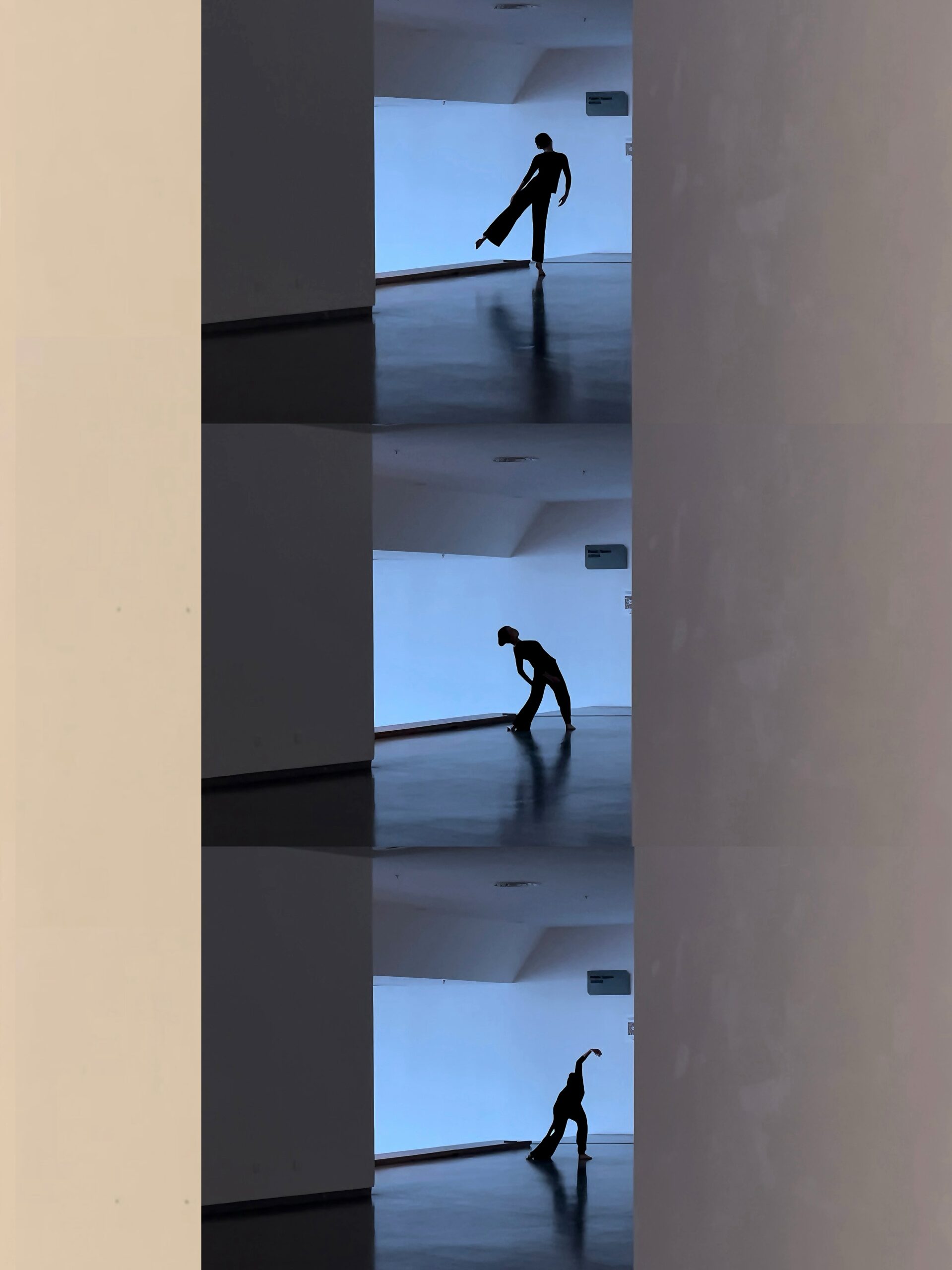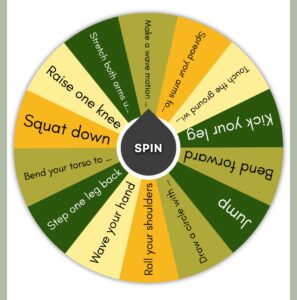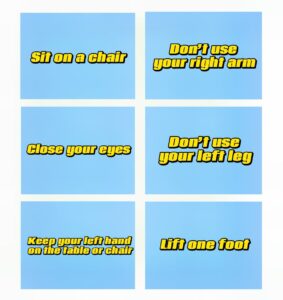The Freedom of Limits – Dancing Inside Boundaries

Summary
Welcome to The Freedom of Limits – Dancing Inside Boundaries! This workshop will explore how creativity can flourish within physical limitations through dance.
Out of limitations comes creativity. — Debbie Allen
Inspired by Merce Cunningham’s “Chance Choreography” we will create unique movement sequences by randomly combining movements and using imposed restrictions.
By integrating these elements, we’ll explore new ways of expressing ourselves and rethink the potential of boundaries in artistic practice. Additionally, through the use of “limitation cards,” we aim to build empathy for the daily challenges that some individuals with disabilities may face.
Engaging with these exercises will not only push the boundaries of creativity but also deepen our understanding of how limitations can inspire innovation and foster inclusivity in dance.

Merce Cunningham with students at Black Mountain College.
Materials Needed🔧
For the workshop, all you’ll need is a welcoming space where you can move freely, pens and paper for creativity, and a chair or table.
After that……
Are you ready to join us?!😄
Preparing the Movement Cards ✏️(3min)
Each participant will prepare 8 movement cards.
You can use this drawing link👇 to randomly select 8 action cards, or create your own by writing and designing movement cards with pen and paper
let your creativity shine!
https://pickerwheel.com/pw?id=GfFAT

·Jump
·Draw a circle with your arms
·Bend forward
·Kick your leg
·Touch the ground with your hand
·Spread your arms for a hug
·Make a wave motion with your body
·Stretch both arms upward
·Raise one knee
·Squat down
·Bend your torso to one side
·Step one leg back
……

Preparing the Limitation Cards✏️(2min)
Based on the props you have prepared (chair or table), write down your Limitation card, you can also choose to print this picture and crop it into six limitation cards.
Please note: Choose one of the six limitation cards at random, and then choreograph the eight movements while keeping the limit that if you encounter a Limitation card that completely contradicts an Movement card, replace it.
·Sit on a chair
·Don’t use your arms
·Close your eyes
·Don’t use your left leg
·Keep your right hand on the chair or table
·Keep one foot off the ground

Drawing the Movement and Limitation Cards 📄
Each participant draws 8 movement cards and 1 limitation card.
Number the 8 movement cards in the order drawn (1 to 8) for sequencing.
Practising the Movements 💃(3min)
Follow the rule on your limitation card as you try each movement.
Link each movement from 1 through 8 to create a connected dance sequence. At the same time, you can experiment by combining two adjacent movements.
such as “jump” while simultaneously “stretching both arms upward”
Optionally, record yourself with your phone for later reflection. If a movement is too challenging due to the limitation, feel free to skip it.
Creating Your Dance Sequence💃(5min)
Familiarize yourself with the movements
and record a full dance sequence using all movements. You can optionally add background music (BGM) to personalise your dance.🎵
If you’ve already created a great dance piece, You can use this video as a reference
Try to create something with your friend. It features a duet between a dancer in a wheelchair and an able-bodied dancer, showing how movement can come together in unique and inspiring ways.
https://b23.tv/SnVZfqD

Merce Cunningham Dance Company performs at the Adrienne Arsht Center.
Reflection and Discussion ✨🤔(5min)
As we think about finding freedom within limits—dancing inside boundaries—we’ve seen how working within a framework can spark fresh ideas and bring out creativity in unexpected ways. The unique sequences you’ve created are a wonderful reminder that sometimes, having a few limits can actually inspire us to explore movement in new and exciting directions.
Now, take a moment to think:
1. How does limitation redefine creativity?
In your unique dance sequences, what movements were forced by limitations? How do these movements push you beyond your usual habits or comfort zone?
2. Looking ahead, how can we apply the principles of inclusivity explored in this workshop to create more inclusive and accessible dance practices?
How can we turn limitations into opportunities for expression, allowing people from diverse backgrounds, abilities, and experiences to participate?
3. How can we challenge traditional concepts of ability to open up new possibilities for dance?
What traditional ideas of ability or technique can be redefined or challenged to create new forms of expression?
Through these questions, I hope you continue to reflect and, in your future dance practices, strive to break boundaries and discover more creative and self-expressive spaces.
Supplementary resources
dance video:
Merce Cunningham’s chance choreography
Cohen, S. J. (1961). Avant-garde choreography. Criticism, 3(1), 16-35. https://www.jstor.org/stable/23091031
Noland, C. (2020). Merce Cunningham: after the arbitrary. University of Chicago Press. https://www.degruyter.com/document/doi/10.7208/9780226541389/html
Noland, C. (2009). Coping and choreography. https://escholarship.org/uc/item/0gq729xq#main
Harris, J. (2012). Merce Cunningham: The Accidental Icon (Doctoral dissertation, Wellesley College.).https://core.ac.uk/download/pdf/217023281.pdf


